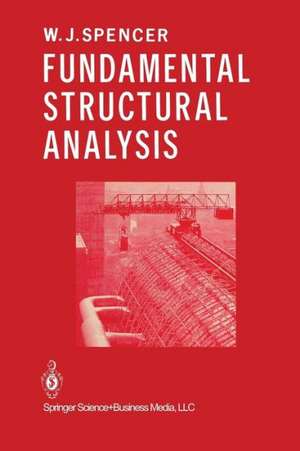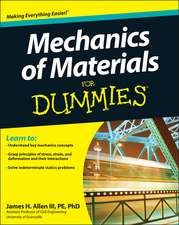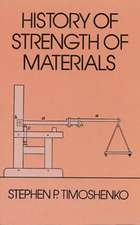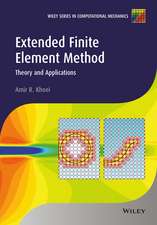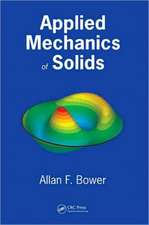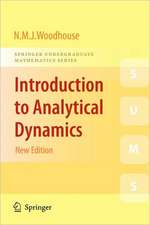Fundamental Structural Analysis
Autor W. SPENCERen Limba Engleză Paperback – 16 dec 2012
Preț: 642.68 lei
Preț vechi: 756.09 lei
-15% Nou
Puncte Express: 964
Preț estimativ în valută:
122.97€ • 128.74$ • 101.75£
122.97€ • 128.74$ • 101.75£
Carte tipărită la comandă
Livrare economică 05-19 aprilie
Preluare comenzi: 021 569.72.76
Specificații
ISBN-13: 9781475720082
ISBN-10: 1475720084
Pagini: 344
Ilustrații: XV, 322 p.
Dimensiuni: 155 x 235 x 18 mm
Greutate: 0.48 kg
Ediția:1988
Editura: Springer
Colecția Springer
Locul publicării:New York, NY, United States
ISBN-10: 1475720084
Pagini: 344
Ilustrații: XV, 322 p.
Dimensiuni: 155 x 235 x 18 mm
Greutate: 0.48 kg
Ediția:1988
Editura: Springer
Colecția Springer
Locul publicării:New York, NY, United States
Public țintă
ResearchCuprins
1 Introduction to Structural Engineering.- 2 Equilibrium Analysis and Determinacy of Structures.- 3 Basic Concepts of the Stiffness Method.- 4 The Matrix Stiffness Method—Part 1: Beams and Rectangular Frames.- 5 The Moment Distribution Method.- 6 The Matrix Stiffness Method—Part 2: Coordinate Transformation.- 7 The Principle of Virtual Work.- 8 The Flexibility Method of Analysis.- 9 The Approximate Analysis of Structures.- 10 Application of Computer Programs to Structural Analysis.- Appendix A: MATOP (Matrix Operations Program)—User Manual.- A.1 Introduction.- A.2 Form of the Program.- A.3 Operation of the Program.- A.4 The Command Formats.- A.5 An Example of the Use of the Program—Solution of Simultaneous Equations.- A.6 Listing of the Program MATOP.- Appendix B: Structural Mechanics Students’ Handbook—A Manual of Useful Data and Information.- 1.- B1.1 Introduction—Convention.- Table B1.2 Some properties of area.- Table B1.4 Beam end rotations under transverse load.- Table B1.5 Standard integrals relating to moment diagrams.- Table B1.6 Second moments of area.- B1.2 Summary of the Slope-Deflection Equations.- B1.3 Use of Table B1.4—Fixed End Moment Calculation.- 2.- B2.1 Introduction—Convention.- B2.2 Continuous Beam Element.- B2.3 Continuous Beam Element—LHE-pinned (Moment Release).- B2.4 Continuous Beam Element—RHE-pinned (Moment Release).- B2.5 Column Element.- B2.6 Column Element—Base-pinned.- B2.7 General Plane Frame Element.- B2.8 Plane Grid Element.- B2.9 Space Frame Element.- Reference.
